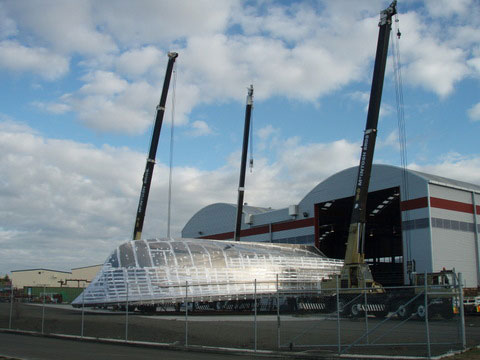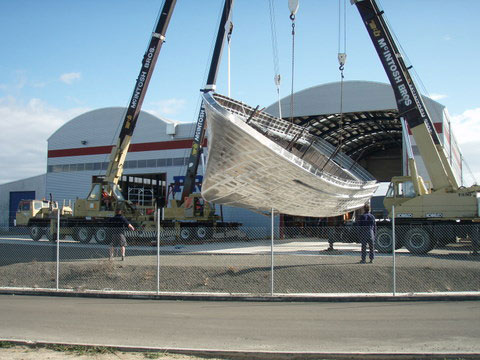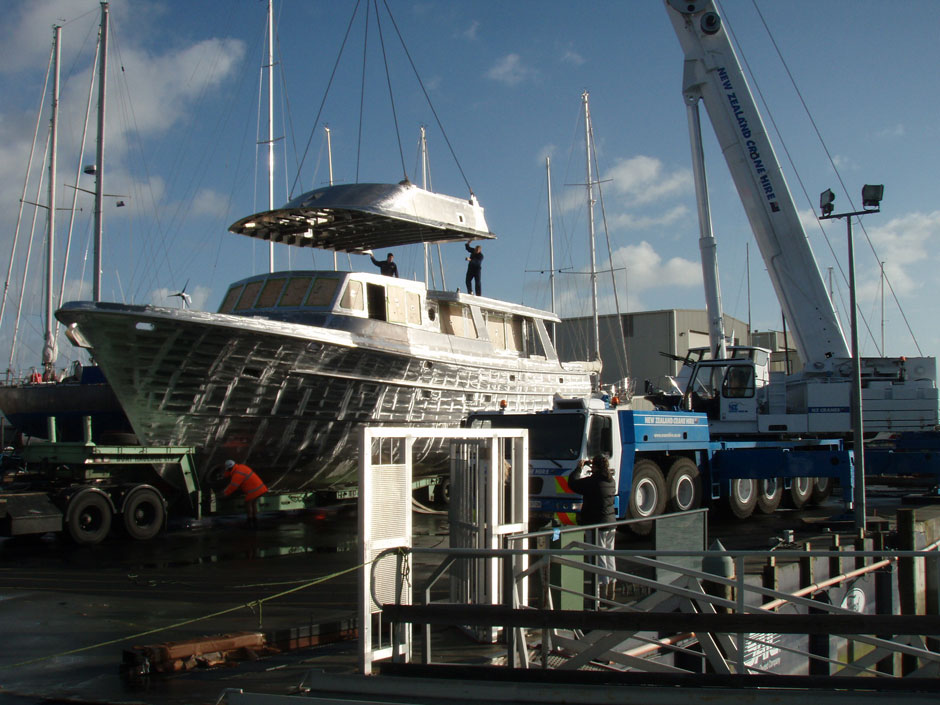
CONSTRUCTION
The owners’ brief brought many challenges to the construction of Adagio. It reflected their extensive research, boating experience, well-developed appreciation for aesthetics and style, and the high expectations they held for their own personal yacht.
Early in the commission, initial interior layout sketches from Sydney interior designer George Freedman signaled some of these challenges. For example the interior was to be “crisp and light”, outcomes that require uncompromisingly flush finishes, accurate express jointing on all panel work, and flawless mirror-finishes. Any deficiencies would be immediately apparent.
The yacht’s design also brought challenges. To maximize the vertical below deck heights, and provide the most efficient interior volume possible, two different main deck elevations were utilized. This provided storage and floor space which allows the yacht’s owners, guests and crew the privacy and self-sufficiency needed for the long periods the yacht was expected to operate in remote locations. Also, the yacht’s exterior has many compound faceted surfaces that are painstakingly shaped in the alloy skin. Taken together, all these needs meant the margin for error in build was nil, and it was clear that a very high standard was set and expected.
Computer modeling for the hull and digital formats for the interior provided solutions to these challenges, as well as enabling us to deliver the majority of costs to a fixed price.
As builders, we look at construction primarily from the engineering up. Mark Fitzgerald’s designs have complex structures to meet American Bureau of Shipping standards. Tanks are built using complex margin plates pieced together with segmented frame structures over full length girders. The result is essentially a double-bottom hull and a vessel that is very rigid and strong.
Computer-modeling of these complex shapes enabled every piece of aluminium to be computer cut to 0.5mm tolerance. This delivered benefits that included fast fabrication, the lowest possible weld distortions, leading to reduced fairing which in turn extends paint-system longevity.
To meet the owners’ wish for the highest levels of safety possible, hull-plating was upgraded from more normally used 5083 grade standard marine aluminium to the higher tensile and much-improved corrosion resistant Alustar / Sealium.
As hull build progressed, the primary engineering systems were carefully and expertly reviewed and documented with the paramount goal of achieving ease of service access in all areas. As a result the engine-bay set out delivers ready access to all systems, and provides for future adaptations or additions.
Within the hull all pipework is executed in high-grade stainless or copper nickel with the best-possible terminations.
– John Vitali, Builder



